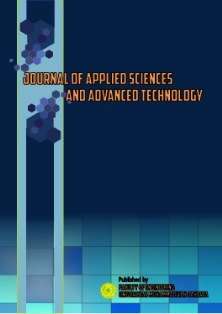Process Control on the Platformer with the Adaptive Neuro-Fuzzy Inference System (ANFIS) Method
DOI:
https://doi.org/10.24853/jasat.4.2.51-56Keywords:
Platformer Modelling reaction kinetic controller ANFISAbstract
Catalytic naphtha reform (platformer) is the main process carried out in oil refineries to increase low octane naphtha into high octane gasoline. The Reformer will meet a wide range of products that require operating flexibility. Process optimization can be done by controlling using the ANFIS method. This optimization requires an accurate process model that is applicable in a wide range of operating conditions, therefore simplifications are made in the kinetic model modeling. This model provides three temperature profiles and concentrations of important hydrocarbons (naphthene, paraffin, and aromatic) throughout the reactor. The optimal control scheme using the ANFIS method is used to maximize the aromatic yield, following the reactor inlet temperature limit. The results obtained were compared with the aromatic results without control and using control with the neural network method. The results showed that the ANFIS method has the ability to control the process. Furthermore, the results obtained from the process are used to determine the pressure of the process during the reaction.Downloads
References
Ancheyta, J., 2011. Modeling and Simulation of Catalytic Reactors for Petroleum Refining, 1st ed. John Wiley & Sons, Inc.,Hoboken, New Jersey
Bommannan, D., R. D.Srivastava and D. N. Saraf,”Modelling of Catalytic Naphtha Reformers”, Can. J. Chem. Eng. 67 (3) 405-411 (1989).
Lee JW, Ko YC, Jung YK, Lee KS, Yoon ES. A modeling and simulation study on a naphtha reforming unit with a catalyst circulation and regeneration system.Comput Chem Eng 1997;21:1105–10.
Padmavathi, G, Chaudhuri, K.K., “Modeling and simulation of commercial catalytic naphtha reformers”, Can. J . Chem. Eng., 50,93@-937(1997).
Ancheyta-Juarez J, Villafuerte-Macias E. Kinetic modeling of naphtha catalytic reforming reactions. Energy Fuels 2000;14:1032–7.
Ancheyta, J.; Villafuerte-Macias, E.; Diaz-Garcia, L.; Gonzalez-Arredondo, E. Modeling and Simulation of Four Catalytic Reactors in Series for Naphtha Reforming. Energy Fuels 2001, 15, 887–893.
Hu Y, Su H, Chu J. Modeling, Simulation and optimization of commercial naphtha catalytic reforming process. In: Proceedings of the 42nd IEEE conference on decision and control, Hawaii, USA; 2003
Ancheyta, J., Villafuerte-Macias, E., Diaz-Garcia, L. and Gonzalez-Arredondo, E. (2001) Modeling and simulation of four catalytic reactors in series for naphtha reforming. Energy & Fuels 15 (4), 887-893.
Arani, H. M., Shokri, S. and Shirvani, M. (2010) Dynamic Modeling and Simulation of Catalytic Naphtha Reforming. International Journal of Chemical Engineering and Applications 1 (2), 159-164.
Arteaga, G. J., Anderson, J. A. and Rochester, C. H. (1999) Effects of Catalyst Regeneration with and without Chlorine on Heptane Reforming Reactions over Pt/Al2O3 and Pt– Sn/Al2O3. ournal of Catalysis 187, 219–229.
Axens (2004) RG series Catalyst Handbook catalytic reforming catalyst. Rueil-Malmaison, Paris, France.
Babaqi, B. S., Takriff, M. S., Kamarudin, S. K. and Othman, N. T. A. (2018) Mathematical modeling, simulation, and analysis for predicting improvement opportunities in the continuous catalytic regeneration reforming process. Chemical Engineering Research and Design 132, 235-251.
Chiyoda (1980) Nigerian National Petrolueum Corporation. Kaduna Refinery Project Operating Manual for process Units CRU Yukohama, Japan.
Fawzi, M. E. (2016) Catalytic Naphtha Reforming; Challenges for Selective Gasoline an Overview and Optimization Case Study. Journal of Advanced Catalysis Science and Technology 3, 27-42.
George, A. (2011) Modelling and Simulation of Catalytic Reactors for Petroleum Refining.New Jersy: John Wiley & Sons, Inc., Hoboken.
George, J. A. and Abdullah, M. A. (2004) Catalytic Naphtha Reforming. second edition. New York: Marcel Dekker Inc.
Gyngazova, M. S., Kravtsov, A. V., Ivanchina, E. D., Korolenko, M. V. and Chekantsev, N. V. (2011) Reactor modeling and simulation of moving-bed catalytic reforming process. Chemical Engineering Journal 176-177, 134-143.
Mohaddecy, R. S., Sadighi, S. and Bahmani, M. (2008) Optimisation of Catalyst Distribution in the Catalytic Naphtha Reforming of Tehran Refinery. Petroleum & Coal (1337- 7027).
Pieck, C. L., Vera, C. R., Parea, J. M., Gimenez, G. N., Sera, L. R. and Carvalho, L. S. (2005) Metal dispersion and catalytic activity of trimetallic Pt–Re–Sn/Al2O3 naphtha reforming catalysts. Catal Today, 107–108:637–42.
Riazi, M. (2005) Characterization and properties of petroleum fractions. 1st edition. Philadephia, USA: International standards(ASTM).
Rodríguez, M. A. and Ancheyta, J. (2011) Detailed description of kinetic and reactor modeling for naphtha catalytic reforming. Fuel 90 (12), 3492-3508.
Saxena, A. K., Das, G., Goyal, H. B. and Kapoor, V. K. (1994) Simulation and optimisation package for semi-regenerative catalytic reformer. Hydrocarbon Technology, 71–83.
Stijepovic, M. Z., Linke, P. and Kijevcanin, M. (2010) Optimization approach for continuous catalytic regenerative reformer processes. Energy Fuels 24, 1908–16.
Unmesh, T. and James, B. R. (1997) Modeling and Optimization of a Semiregenerative Catalytic Naphtha Reformer. AIChE Journal.
D. Manamalli, P. Kanagasabapathy, K.Dhivya, 2006 “Expert Optimal Control of Catalytic Reformer Using ANN”, Taylor & Francis Group
H.M. Arani, S. Shokri, M.Shirvani, 2010, “Dynamic Modeling and Simulation of Catalytic Naphta Reforming”, International Journal of Chemical Engineering and Application, Vol I; No. 2, Augustus 2010
Hameed, Shymaa Ali., 2017, “Improving of Design Parameters of an Industrial Continuous Catalytic Reforming Reactors”, Iraqi Journal of Chemical and Petroleum Engineering, Vol 18 No 2
Sadighi, Sepehr., Mohaddecy, Reza Seif., Norouzian, Ali., 2015, “Optimizing an Industrial Scale Naphta Catalytic Reforming Plant Using a Hybrid Artificial Neural Network and Genetic Algorithm Technique”, Bulletin of Chemical
Downloads
Published
Issue
Section
License
COPYRIGHT POLICY
The author(s) of an article published in the Journal of Applied Sciences and Advanced Technology (JASAT) retains ownership of the intellectual property rights in work (s).
PUBLISHING RIGHTS
The author(s) of an article published in the Journal of Applied Sciences and Advanced Technology (JASAT) have unrestricted publication rights. The authors give the Journal of Applied Sciences and Advanced Technology (JASAT) the right to publish the article and designate the Faculty of Engineering Universitas Muhammadiyah Jakarta Publishing as the original publisher of the article.
LICENSING POLICY
JASAT is an open-access journal that follows the Creative Commons Non-Commercial 4.0 International License (CC BY-NC 4.0), which states that:

Under this license, the reusers must give appropriate credit, provide a link to the license, and indicate if changes were made. Users may do so in any reasonable manner, but not in any way that suggests the licensor endorses users or their use.
Please take the time to read the whole license agreement (https://creativecommons.org/licenses/by-nc/4.0/). As long as reusers follow the license conditions, the owner cannot withdraw these freedoms. The following components are included under this license:
 Attribution: Users must provide appropriate attribution, including a link to the license, and indicate whether or not they made any modifications. Users are free to do so reasonably, but not in a manner that indicates the licensee approves of their usage.
Attribution: Users must provide appropriate attribution, including a link to the license, and indicate whether or not they made any modifications. Users are free to do so reasonably, but not in a manner that indicates the licensee approves of their usage.
 NonCommercial: Users may not use the material for commercial purposes.
NonCommercial: Users may not use the material for commercial purposes.












_2.png)


1.png)

2.png)
